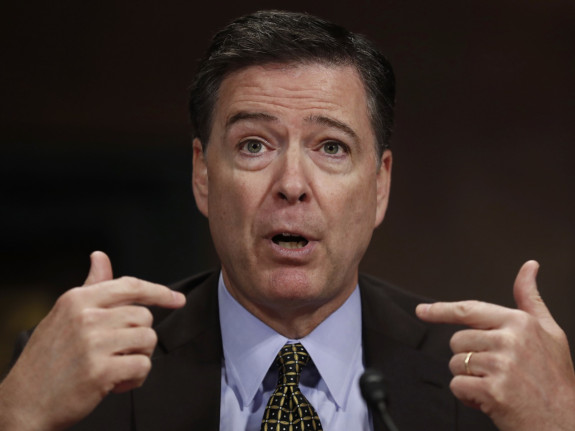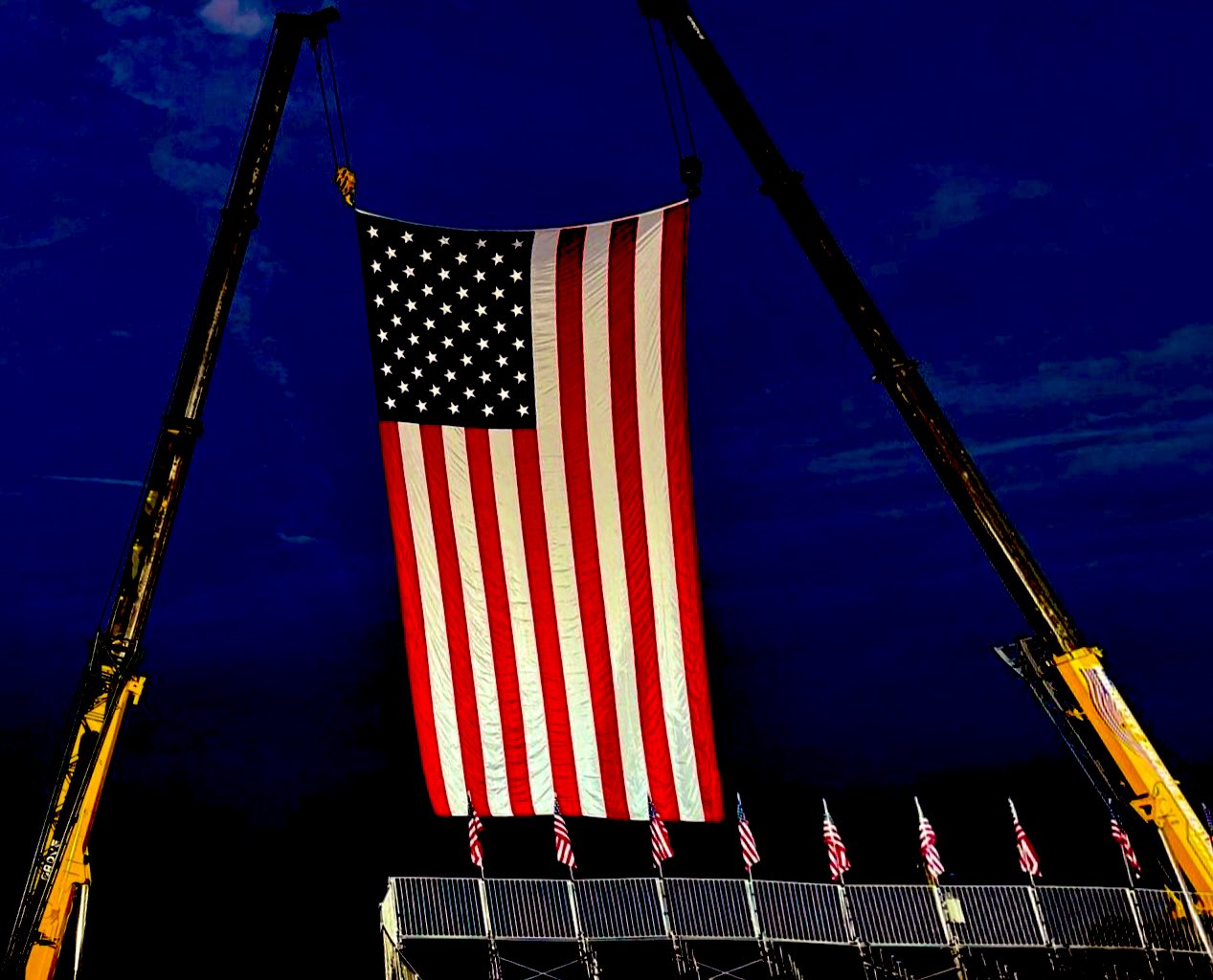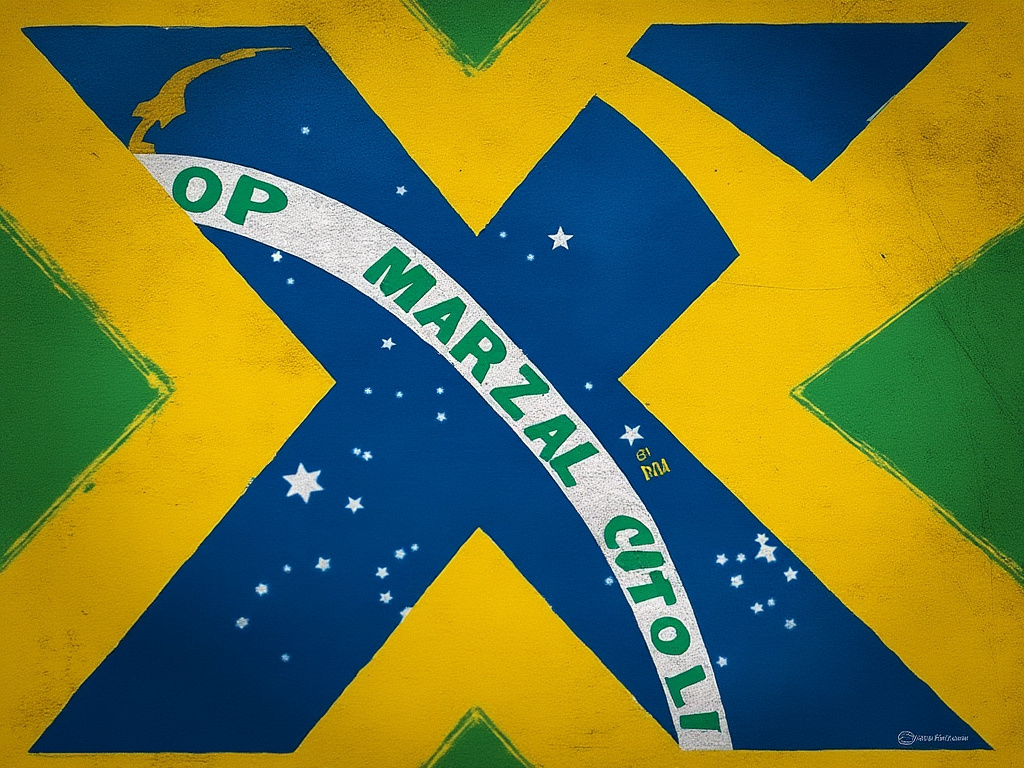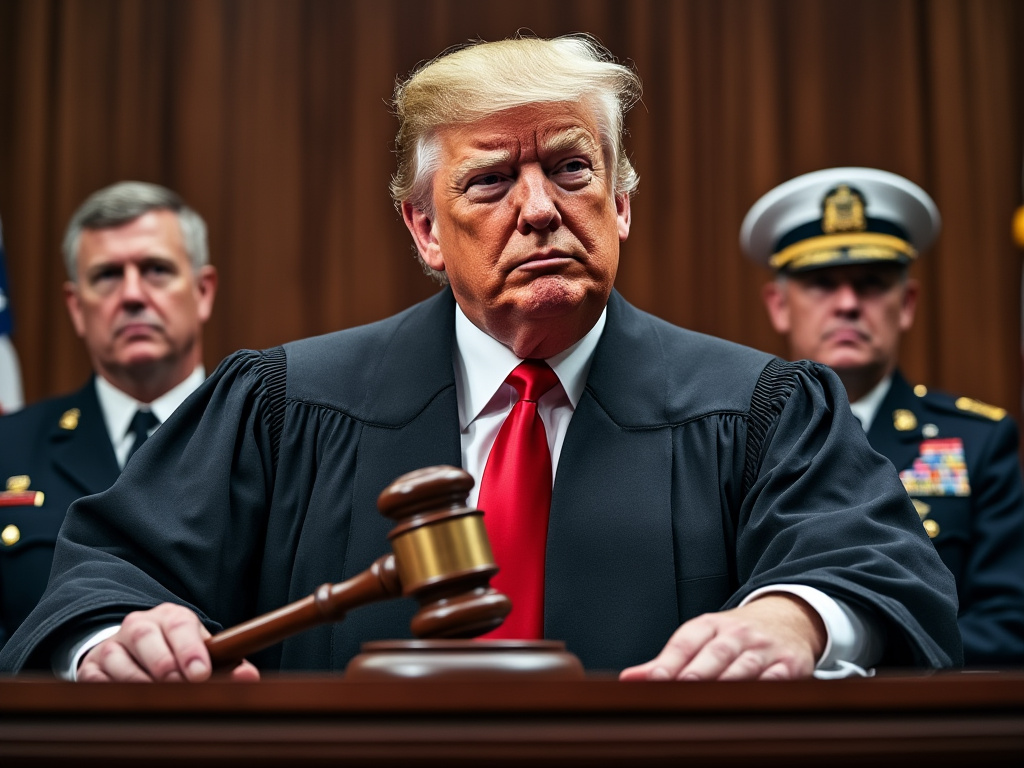Politics
BOMBSHELL: At Least One Of The Four Memos Comey Passed To NYT Contained Classified Info
Published
7 years agoon

(Via Zerohedge)
Back in May, the New York Times scored one of their biggest ‘hits’ to date on Trump when they secured 4 memos drafted by James Comey allegedly summarizing direct conversations with the President (we covered it here: Comey’s Revenge: Leaks Memo To NYT Saying Trump Asked Him To End Flynn Investigation). Among other things, the memos asserted that Trump directly asked Comey to end his investigation of Michael Flynn and to pledge “loyalty” to him.
Of course, as we all know by now, Comey did not pass his memos directly to the New York Times but instead used an intermediary, Columbia University Law School professor Daniel Richman. Now, Richman told CNN in July that none of the memos he received were marked “classified” but, according to a new letter sent to Deputy Attorney General Rod Rosenstein yesterday by Chuck Grassley, that may not have been entirely accurate.
As Grassley notes, 4 of the 7 Comey memos that he reviewed at the FBI were “marked classified at the “SECRET” or “CONFIDENTIAL” levels.” Moreover, since Richman received 4 memos, simple mathematical realities would dictate that at least of them contained material that the FBI now considers classified.
My staff has since reviewed these memoranda in a Sensitive Compartmented Information Facility (SCIF) at the FBI, and I reviewed them in a SCIF at the Office of Senate Security. The FBI insisted that these reviews take place in a SCIF because the majority of the memos are classified. Of the seven memos, four are marked classified at the “SECRET” or “CONFIDENTIAL” levels. Only three did not contain classified information.
According to press reports, Professor Daniel Richman of Columbia Law School stated that Mr. Comey provided him four of the seven memoranda and encouraged him to “detail [Comey’s] memos to the press.” If it’s true that Professor Richman had four of the seven memos, then in light of the fact that four of the seven memos the Committee reviewed are classified, it would appear that at least one memo the former FBI director gave Professor Richman contained classified information. Professor Richman later read a portion of one of the memos to a New York Times reporter.
For those who missed it, here is what Richman told CNN about the classification of the memos he shared with the New York Times:
According to CNN, Daniel Richman, with whom Comey shared at least one memo the contents of which Richman shared with New York Times reporter Michael Schmidt, said President Trump was wrong in accusing Comey of sharing classified information with journalists.
“No memo was given to me that was marked ‘classified,'” Daniel Richman told CNN. “No memo was passed on to the Times.”
Well, not quite: Richman did share the contents of one memo, he said, but “the substance of the memo passed on to the Times was not marked classified and to my knowledge remains unclassified.”
As you may recall, during his June 2017 testimony Comey said he specifically wrote the memos to avoid including classified information to make them “easier to discuss.”
“My thinking was, if I write it in such a way that I don’t include anything that would trigger a classification, that’ll make it easier for us to discuss, within the FBI and the government, and to — to hold on to it in a way that makes it accessible to us,” Comey told senators.
And here, as in the case of Hillary Clinton, is where the problem emerges, because what Comey considered not confidential – just like Clinton – has differed from others’ opinion. In other words, whether he wrote or rewrote the memos to make the leak “easier” – which also begs the question what else was redacted or added to the original content – the confidential information remained…at least in the opinion of someone within the Department of Justice.
Of course, as we all know well by now, mishandling classified information and/or making false statements to the FBI is only a crime if you’re a Republican and/or not part of the Deep State.
Here is the full Chuck Grassley Letter to Rosenstein:
Dear Deputy Attorney General Rosenstein:
This Committee has previously written to the Department of Justice and the Federal Bureau of Investigation about the memorandum that former Director Comey created purportedly memorializing his interactions with President Trump. My staff has since reviewed these memorandum in a Sensitive Compartmented Information Facility (SCIF) at the FBI, and I reviewed them in a SCIF at the Office of Senate Security. The FBI insisted that these reviews take place in a SCIF because the majority of the memos are classified. Of the seven memos, four are marked classified at the “SECRET” or “CONFIDENTIAL” levels. Only three did not contain classified information. FBI personnel refused to answer factual questions during the document reviews, including questions about the chain of custody of the documents I was reviewing, the date that they were marked classified, and who marked them as classified.
According to press reports, Professor Daniel Richman of Columbia Law School stated that Mr. Comey provided him four of the seven memoranda and encouraged him to “detail [Comey’s] memos to the press.” If it’s true that Professor Richman had four of the seven memos, then in light of the fact that four of the seven memos the Committee reviewed are classified, it would appear that at least one memo the former FBI director gave Professor Richman contained classified information. Professor Richman later read a portion of one of the memos to a New York Times reporter.
When the Committee contacted Professor Richman seeking copies of the memos Mr. Comey had provided him, he refused to provide them, did not say how many he had received from Mr. Comey, and refused to say whether he retained copies. It is unclear whether any of the memos reviewed by the Committee were retrieved from Professor Richman. The Committee has accordingly not determined which of the seven memos Mr. Comey provided him. Professor Richman did tell Committee investigators that he was working with the Special Counsel’s Office, and he reportedly told the media that he had turned over to the FBI copies of the memos he’d received from Mr. Comey. If true, the Justice Department should know which memos were provided and be able to share that information with the Committee.
In order for the Committee to further assess this situation, please respond to the following in writing by no later than January 17, 2018:
Has the Justice Department or FBI in fact determined that any of the memoranda Mr. Comey sent Professor Richman contained classified information? If so, what steps were taken to retrieve and safeguard the information?
Which of the seven memoranda the FBI made available for the Committee’s review did Mr. Comey give to Professor Richman?
When did Mr. Comey give Professor Richman the memoranda?
At the time that Professor Richman received the memoranda, were any marked as classified?
At the time that Professor Richman received the memoranda, did any contain classified information, regardless of markings?
Please explain the method by which Mr. Comey transmitted the memoranda to Professor Richman. If the transmittal was electronic:
Please provide the account information that Mr. Comey and Mr. Richman used.
Please describe what steps the FBI has taken to recover all copies of any classified memorandum that might reside on computers, servers, or at other locations.
Have you initiated an investigation into the matter of whether Mr. Comey improperly disclosed classified information by providing these memoranda to Professor Richman? If so, what is the status of the investigation? If not, why not?
Has there been any review of whether the disclosure of the memoranda by Mr. Comey was otherwise improper, such as whether it violated his employment agreement or any Department rule or policy? If so, what is the status of the review?
If not, why not?
When did the FBI mark the four memoranda as classified, and who made the classification decision?
As noted above, it has been reported that Professor Richman returned the memoranda to the FBI. If so, on what date did this occur?
Did anyone from the FBI or Special Counsel’s Office discuss with Professor Richman this Committee’s request for copies of the memos? If so, please provide all records related to any such communications.
Does Professor Richman still have possession of any of the memorandum or copies?
Thank you for your prompt attention to this matter. Please contact Patrick Davis of my Committee staff at (202) 224-5225 if you have any questions.
Politics
President Trump Returns to Butler to FIGHT for America First
Published
3 weeks agoon
October 5, 2024
Trump’s Return to Butler, PA: A Symbol of Tenacity and Defiance
Today, former President Donald Trump makes a symbolically charged return to Butler, Pennsylvania, the site where his resilience was tested in an unprecedented manner. This visit, on October 5, 2024, is not just another campaign stop but a poignant reminder of his enduring “FIGHT FIGHT FIGHT” mantra, which has become emblematic of his political persona.
10/4 | BUTLER, PENNSYLVANIA… pic.twitter.com/YradtyIbMR
— Dan Scavino Jr.🇺🇸🦅 (@DanScavino) October 5, 2024
A Historical Backdrop
On July 13, 2024, Butler was thrust into the national spotlight when an assassination attempt was made on Trump during a rally. Surviving with a mere graze to his ear, Trump’s immediate response was to raise his fist, a moment captured in what has now become an iconic image, symbolizing his defiance against adversity. This incident didn’t just scar him physically but also galvanized his supporters, turning Butler into a shrine of sorts for Trump’s resilience.
The Symbolism of the Return
Trump’s decision to return to Butler is laden with symbolism. Here’s why this visit resonates deeply with his campaign ethos:
- Defiance in the Face of Danger: Returning to the site where his life was threatened underscores Trump’s narrative of not backing down. It’s a physical manifestation of his “FIGHT FIGHT FIGHT” ethos, showcasing his refusal to be intimidated by violence or political opposition.
- Political Theatre and Momentum: This rally serves as a masterstroke in political theatre, aiming to convert the attempt on his life into a rallying cry for his supporters. It’s an attempt to reignite the fervor seen in the immediate aftermath of the incident, where his campaign saw a surge in support, portraying him as a fighter against all odds.
- Uniting the Base: By revisiting Butler, Trump not only honors the victims of the incident but also uses the location to unify his base. The rally is expected to be a blend of remembrance and a call to action, emphasizing themes of perseverance, security, and defiance against the establishment’s perceived failures.
- A Message of Strength: For Trump, every appearance since the assassination attempt has been an opportunity to project strength. Returning to Butler amplifies this message, suggesting that neither personal attacks nor political challenges will deter his campaign or his message.
The Broader Impact
The “FIGHT FIGHT FIGHT” mantra has transcended its initial context, becoming a broader call against what Trump describes as systemic failures, from immigration policies to disaster response, as seen in his critiques of the current administration’s handling of events in North Carolina, echoed in his and his allies’ posts on X.
This return to Butler isn’t just about revisiting the site of a traumatic event; it’s a strategic move to encapsulate his campaign’s spirit in one location, making it a pilgrimage of sorts for his supporters. It represents Trump not just as a politician but as a symbol of resistance and persistence, key themes in his narrative of reclaiming America.
In sum, Trump’s rally in Butler today is more than a campaign event; it’s a testament to his campaign’s core message: a relentless fight against adversaries, be they political opponents, critics, or even those who threaten his life. This event is poised to be a significant moment in the 2024 presidential race, leveraging trauma, resilience, and defiance into political capital.

In an unprecedented move, Brazil’s Supreme Court has ordered the nationwide suspension of X, the social media platform formerly known as Twitter, marking a significant escalation in the ongoing feud between the platform’s owner, Elon Musk, and Brazilian authorities. This decision stems from Musk’s refusal to comply with court orders to appoint a legal representative in Brazil and to suspend certain accounts accused of spreading misinformation and hate speech.
The tension reached a boiling point when Justice Alexandre de Moraes gave X a 24-hour ultimatum to name a representative or face a complete operational shutdown in Brazil. Musk’s response was to close X’s office in Brazil, citing threats of arrest against his staff for non-compliance with what he described as “secret censoring orders.” This move has left millions of Brazilian users in the dark, with the platform going offline across the nation.
The implications of this standoff are manifold. Firstly, it pits the concept of free speech, as championed by Musk, against Brazil’s judicial efforts to curb what it sees as the spread of dangerous misinformation. Critics argue that this is a test case for how far nations can go in regulating global digital platforms. Secondly, the economic impact on X cannot be understated, with Brazil being one of its significant markets.
The situation has also sparked a debate on digital sovereignty versus global internet freedom. While some see Justice de Moraes’s actions as necessary to protect Brazilian democracy, others view it as an overreach, potentially stifling free expression. As X users in Brazil scramble to find alternatives or use VPNs to bypass the ban, the world watches closely to see if this could set a precedent for other nations grappling with similar issues.

In an era where national security is paramount, the discussion around military tribunals has resurfaced, not as a relic of past conflicts, but as a necessary tool for contemporary justice. The advocacy for military tribunals, especially in the context of recent political and security challenges, underscores a fundamental truth: sometimes, conventional judicial systems are not equipped to handle threats that undermine the very fabric of national security.
The case for military tribunals hinges on several key arguments. Traditional courts, bound by extensive legal procedures, can often delay justice, particularly in cases involving national security. Military tribunals, by design, expedite the process, ensuring that threats are neutralized swiftly, which is crucial in preventing further harm or espionage. Military law, with its focus on discipline, order, and security, provides a framework uniquely suited for cases where the accused are involved in acts against the state or military. This specialization ensures that the complexities of military strategy, intelligence, and security are not lost in translation to civilian courts.
From the Civil War to World War II, military tribunals have been utilized when the nation’s security was at stake. These precedents show that in times of war or national emergency, such tribunals are not only justified but necessary for maintaining order and security. Contrary to common misconceptions, military tribunals can be transparent and accountable, especially when conducted under the scrutiny of both military and civilian oversight. The structure ensures that while justice is swift, it is also fair, adhering to the principles of law that respect due process.
Addressing criticisms, the argument for military tribunals isn’t about subverting justice but ensuring it. Critics argue that military tribunals bypass constitutional rights, particularly the right to a jury trial. However, in scenarios where individuals are accused of acts that directly threaten national security, the argument for exceptional measures holds. The Constitution itself allows for exceptions during times of war or public danger, as seen in cases like Ex parte Quirin, where the Supreme Court upheld the use of military tribunals for unlawful combatants. Moreover, the fear of authoritarianism is mitigated by the checks and balances inherent in the U.S. system. The President, Congress, and the judiciary each play roles in ensuring that military tribunals do not overstep their bounds. The judiciary, in particular, has the power to review and intervene if rights are egregiously violated.
From a broader perspective, the call for military tribunals isn’t just about addressing immediate threats but also about sending a message. It reaffirms the nation’s commitment to protecting its sovereignty and the rule of law. By using military tribunals, the U.S. demonstrates its resolve to handle threats in a manner that conventional courts might not be designed for, thereby potentially deterring future acts against the state.
In conclusion, the advocacy for military tribunals in the current climate is not about subverting justice but about ensuring it. These tribunals represent a robust response to unique challenges that threaten national security, offering a blend of efficiency, expertise, and justice that civilian courts might not always provide. While the debate will continue, the necessity of military tribunals in certain scenarios is clear, reflecting a pragmatic approach to safeguarding the nation while upholding the principles of justice.

President Trump Returns to Butler to FIGHT for America First

The Clash of Titans: X’s Shutdown in Brazil

President Trump: Military Tribunals For Traitors

Trump / Kennedy 2024 – The Golden Ticket





